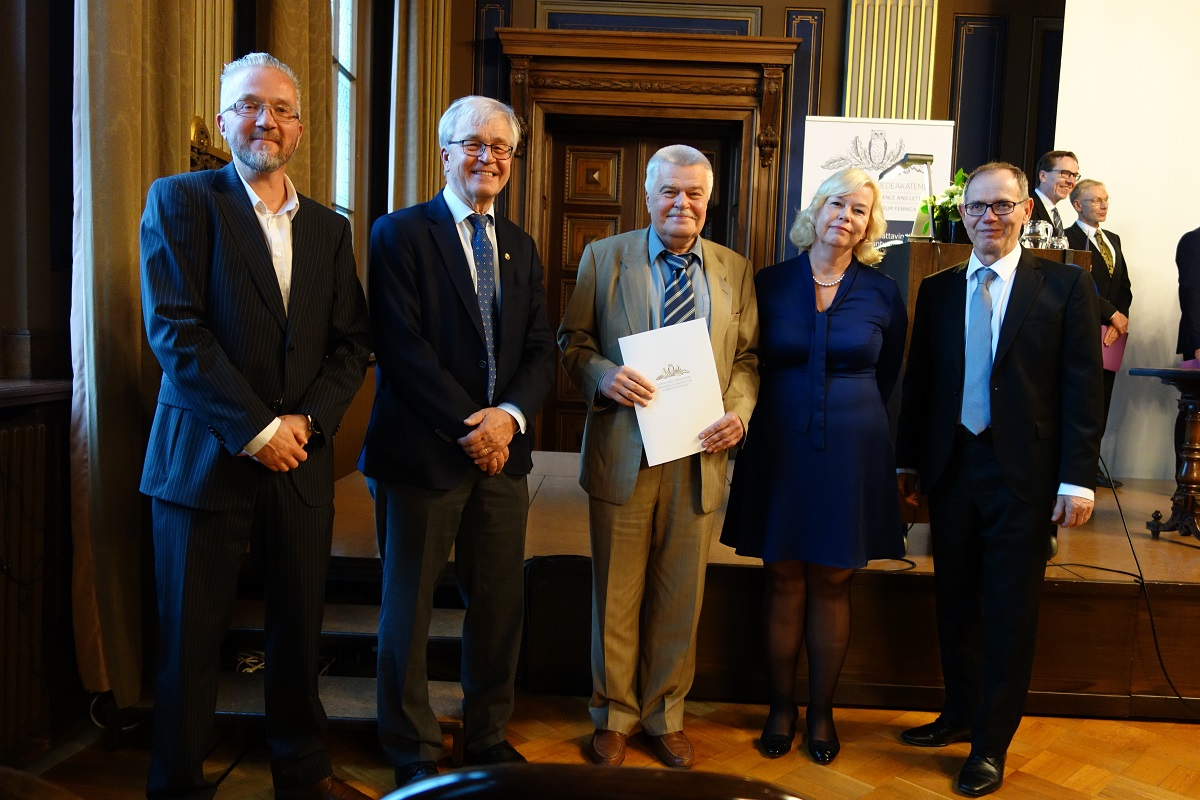SPbU’s professor is international member of the Finnish Academy of Science and Letters

SPbU’s Dean of the Faculty of Mathematics and Mechanics, Corresponding Member of the Russian Academy of Sciences, Professor Gennadii Leonov has gained a diploma of international member of the Finish Academy of Science and Letters “For outstanding academic merits”.
Today, the Finish Academy of Science and Letters has more than 500 international members, with as few as 6 representatives from Russia. The title is evidence of recognition of merits in research collaboration between Finland and a country, according to the Academy’s members.
Gennadii Leonov is an outstanding mathematician , corresponding member of the RAS, winner of the State Award of the USSR, and has been the head of the Faculty of Mathematics and Mechanics for more than 30 years. In 2016, Professor Leonov was recognized as the most cited scientists in mathematics, according to the Web of Science Core Collection and Thomson Reuters, followed by his student, SPbU’s Associate Professor Nikolai Kuznetsov.
The only scientist from St Petersburg who was the member of the Finnish Academy of Science and Letters was Ludvig Faddeev. To be elected as an academician in mathematics and computer sciences is a great honour and responsibility for me.
Dean of the Faculty of Mathematics and Mechanics, SPbU Gennadii Leonov
The title is a result of the long-standing collaboration between SPbU and University of Jyväskylä, says he.
Russian and Finish scientists have been working on uniting theoretical mathematical methods (a group headed by Gennadii Leonov) and current approaches to computational methods (a group headed by Pekka Neittaanmäki). The outstanding achievements gain a global recognition and make their research at the forefront of compute architecture and telecommunications.
Besides, the scientists educate and prepare young researchers in information technologies: 11 members of these groups have defended their theses and gained Ph.D. Russia-Finland cooperation will contribute greatly to work of the federal educational and methodological union in:
- Mathematics and computer sciences
- Fundamental informatics and information technologies
- Mathematical support and information system management
The mathematical methods developed by the scientific school headed by Gennadii Leonov are globally applied in new technologies in automatic control, information systems, and aerospace engineering.
In 1986, he as part of the team of the authors was given the State Award of the USSR for “developing the theory of phase synchronization in radio engineering and telecommunications” as he had developed new mathematical methods. In 1990, the advent of new information technologies promoted an active use of the phase synchronization systems. In particular, these systems are integral part of the frequency synthesizer in each computer. Various modifications of the systems support synchronization in super-computers and are used in digital data transfer in the GLONASS and GPS. New methods needed for new phase synchronization systems were also developed by the research group headed by Gennadii Leonov.
The last forty years in science have seen a dramatic development of the mathematical theory of chaos due to our interest in turbulence in hydrodynamics, weather forecasts, ocean current research, and discovering the chaotic oscillations in the electronic chains and systems. The theory is based on the methods from various mathematical theories, in particular topology (dimension theory), theory of differential equations and dynamic systems, bifurcation theory, and oscillations theory.
In 2010, Gennadii Leonov and Nikolai Kuznetsov introduced a concept of the ‘hidden oscillation’ and developed new mathematical methods to study these oscillations.
Homoclinic and heteroclinic orbits are vital in the scenarios of transition to chaos. In 2012, Professor Leonov formulated a general principle of how we can study these trajectories, a 'fishing principle’ which allowed to develop universal ground to analytically prove the existence of the homoclinic trajectories in a number of known dynamic systems. So, he has made a significant contribution in the mathematical theory of chaos.

